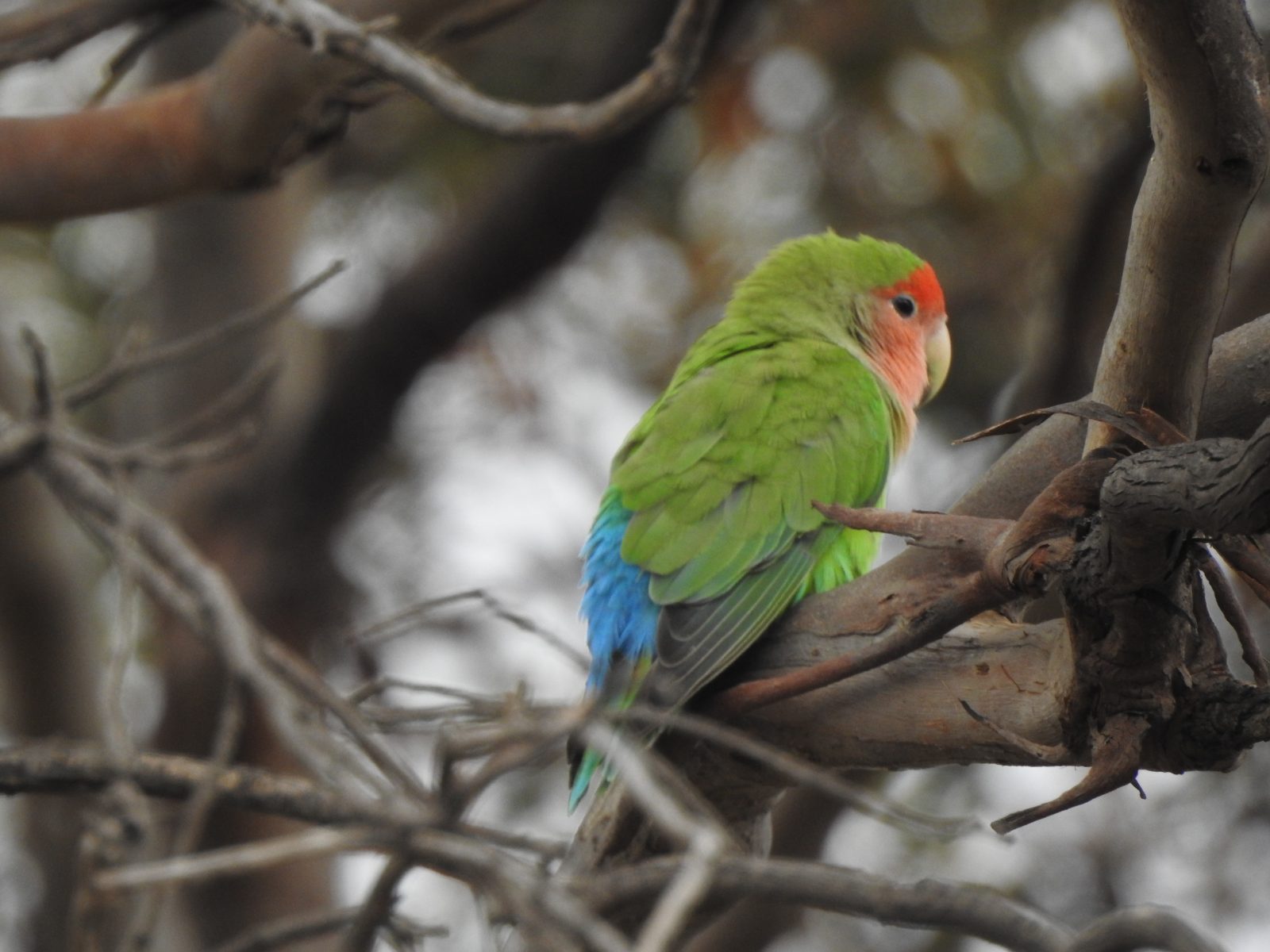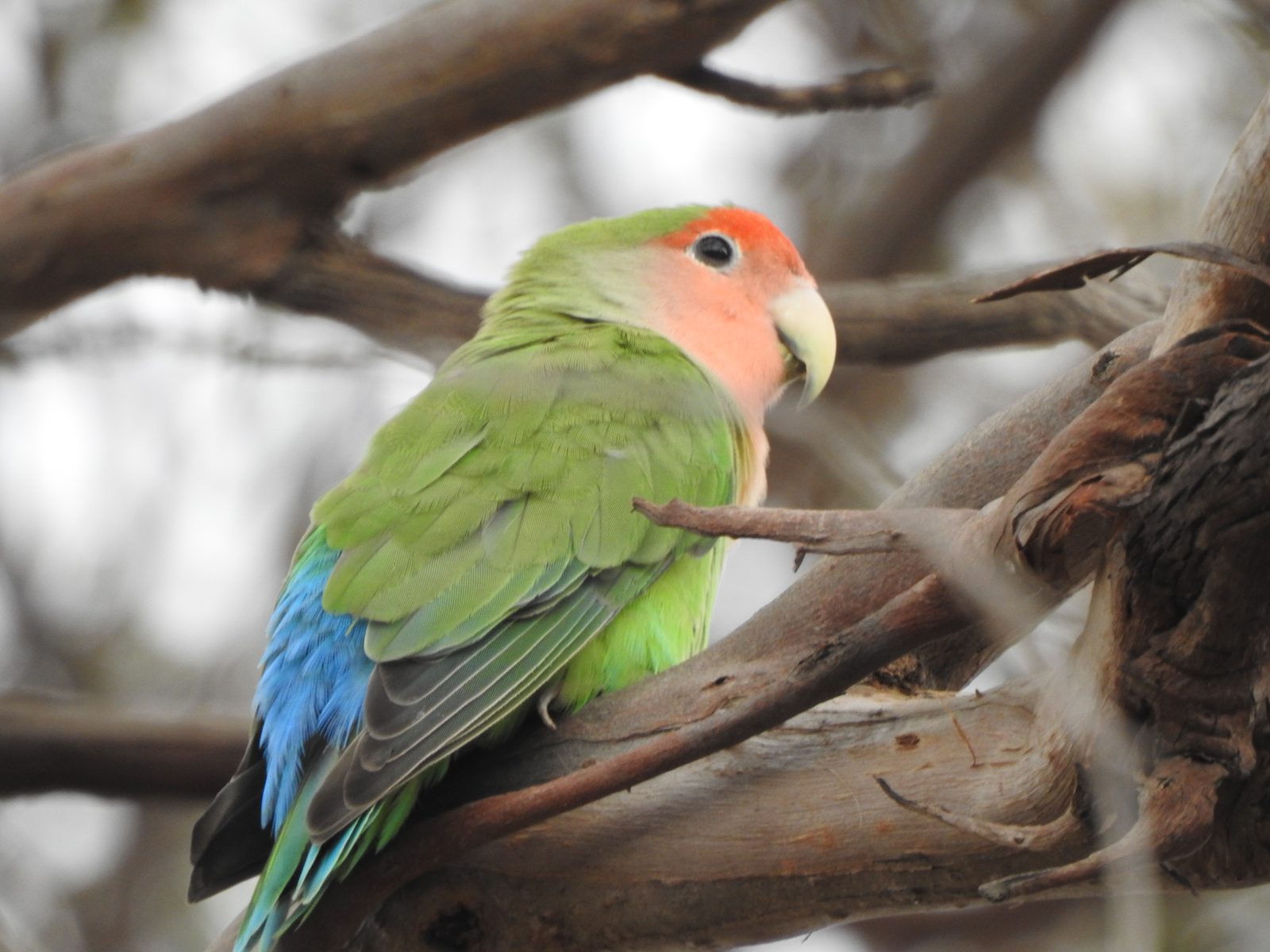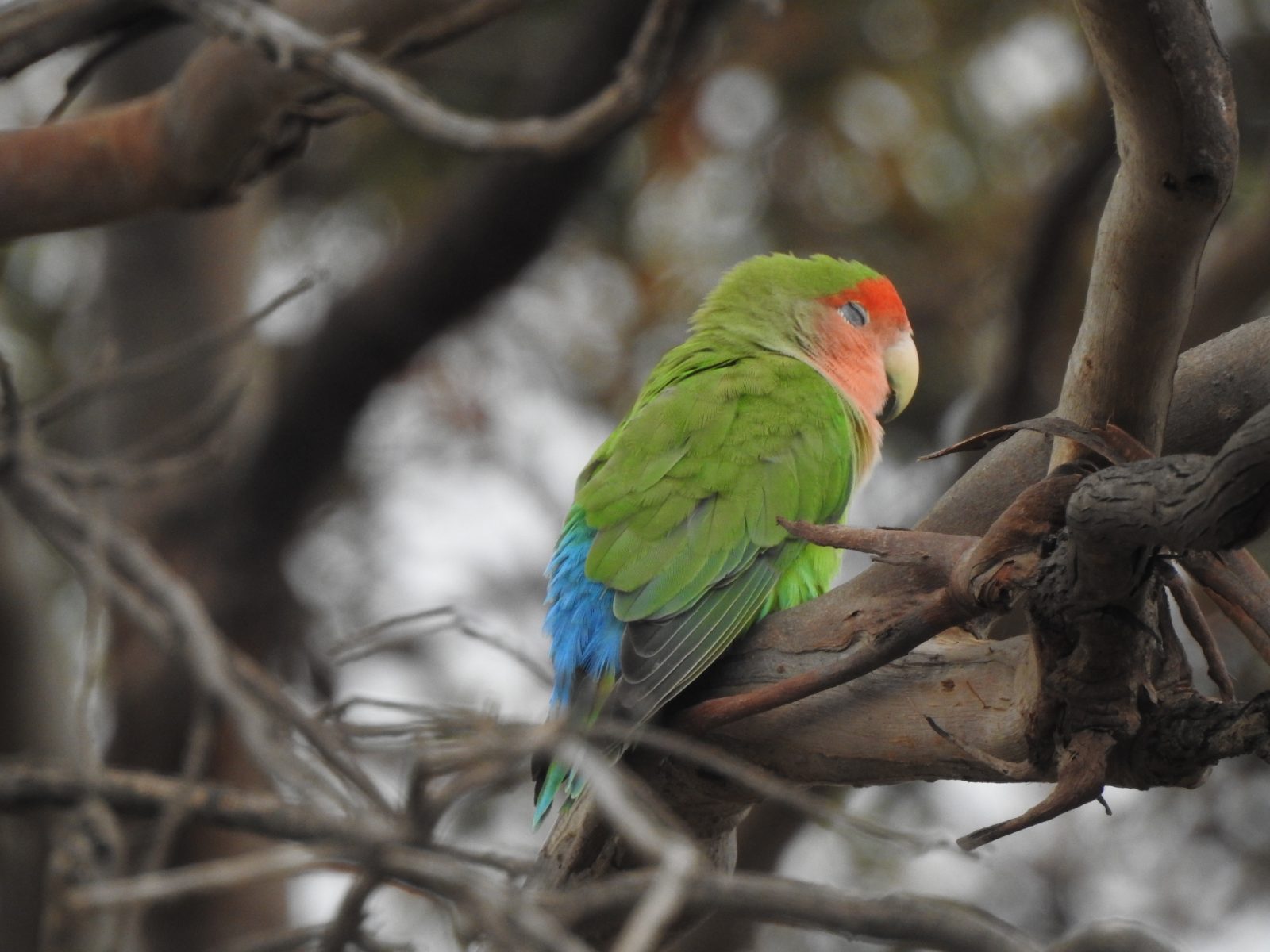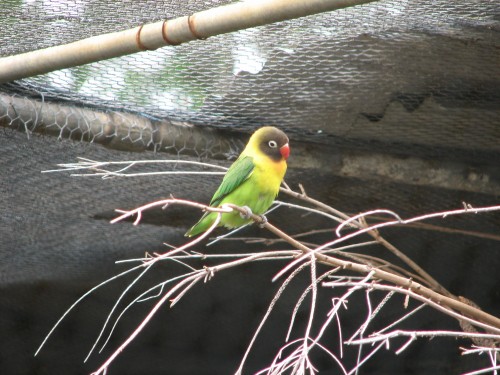A lonely Lovebird

I had an unusual visitor to my garden last week. I was walking out to my car in the driveway when I saw a Rosy-faced Lovebird in the tree near the car. This not an Australian native bird but it is commonly kept in cages and aviaries. I suspect that this individual has escaped from a cage somewhere nearby.
I also recorded and photographed this same species in my garden just over a year ago. There is a distinct possibility that this is the same individual though I would be surprised it this was the case. There are many birds of prey around my home and I would say that this colourful bird would be an easy lunch for a falcon, hawk or kite hovering around.

African species
The Rosy-faced Lovebird – also known as the Peach-faced Lovebird – is native to the southwestern parts of Africa, primarily in Namibia, southern parts of Angola and north-western parts of South Africa. Its main diet consists of seeds and berries. In some areas where feed is plentiful, they can be a pest when feeding on cereal crops. Both male and female look the same.

Aviculture
The Rosy-faced Lovebird is a very common bird held in captivity around the world, including here in Australia. This has resulted in enthusiasts breeding a range of colour variations.
Yellow-collared Lovebird, Adelaide Zoo
The Adelaide Zoo has an excellent collection of Australian and exotic birds in their aviaries and I enjoy the challenge of photographing them, especially where I have to shoot through the wire netting. The photo of a Yellow-collared Lovebird above turned out quite well, despite the netting in the way. It is much easier in the walk-through aviaries of course.
The various species of lovebirds available through pet shops and those that specialise in just birds make them quite popular here in Australia. My opinion of lovebirds is somewhat unfavourable, I must admit. Many years ago our neighbours when we were living in another town had quite a number of lovebirds in a smallish cage right next to our fence. All I can remember is that they were constantly squabbling and screeching.
On a more positive note, I will acknowledge that they are beautiful birds. I can see the attraction of having them as pets, either in a cage or in a bigger aviary.
They are native to Tanzania in southern Africa.
I have written about this species on another occasion (click here).
